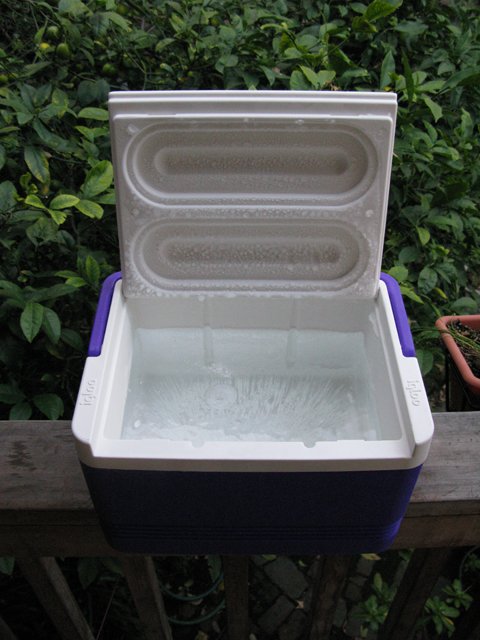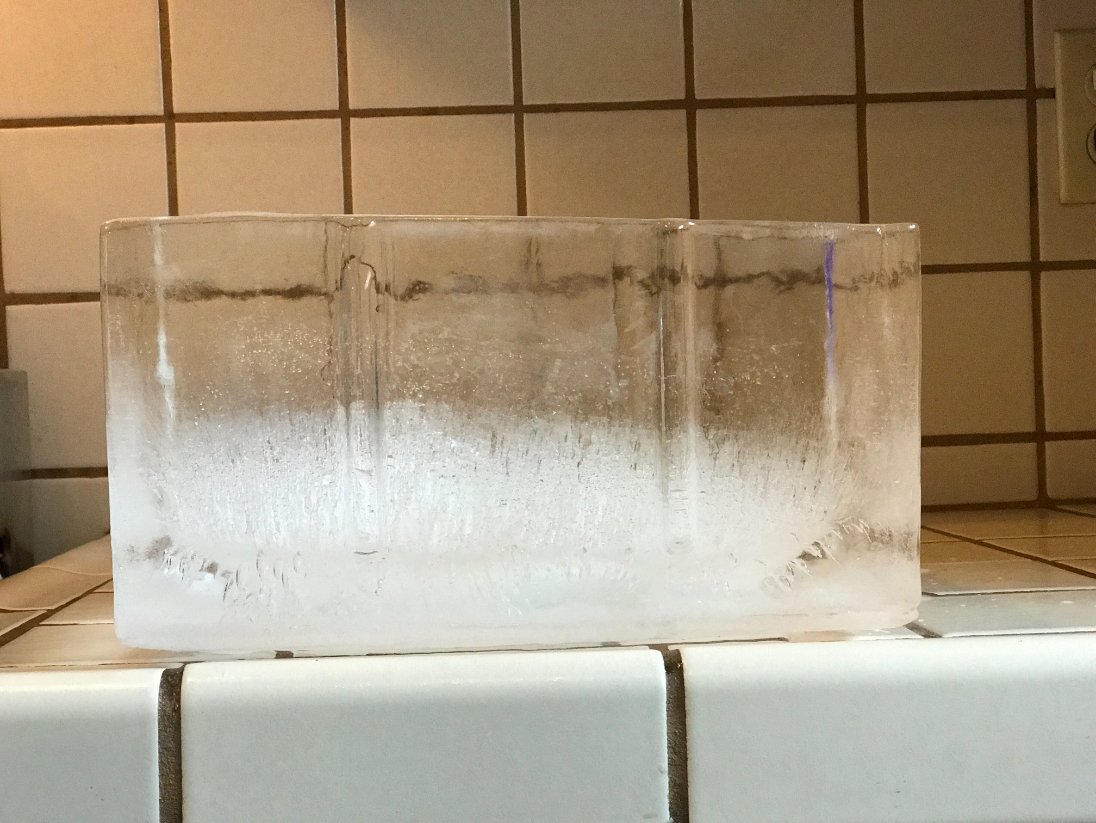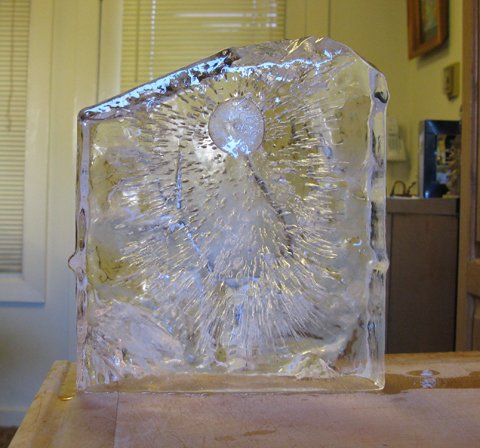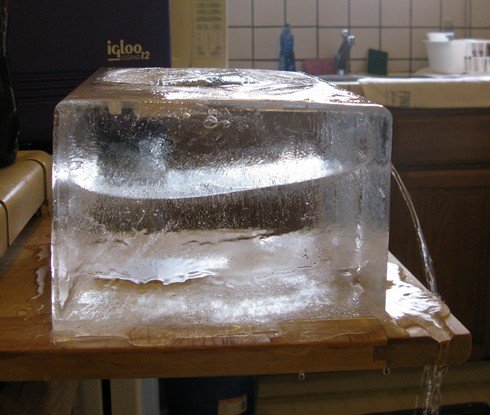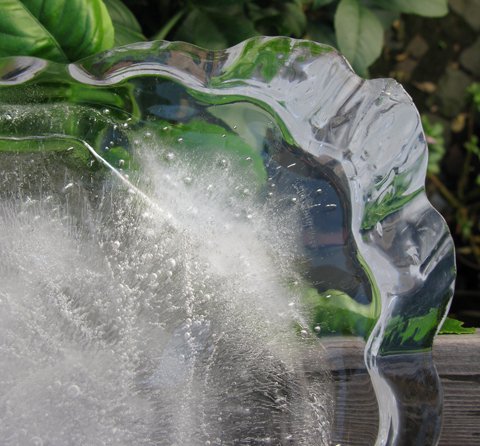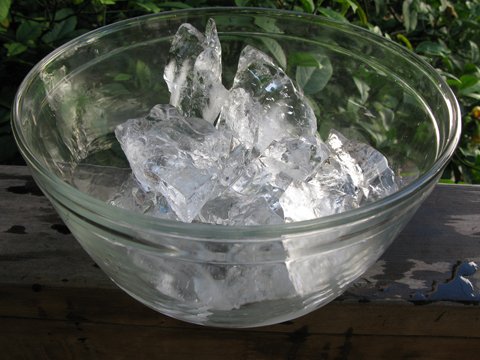This post describes how to make a clear block of ice using a picnic cooler. Since I first wrote it in 2009, I have figured out a lot about ice, but this was the defining post for what would become known as "directional freezing." What is Directional Freezing? (the basic theory behind clear ice).
An index of all of the ice experiments on Alcademics can be found here. It's also a great place to start.
Before I figured this out, I tried many other experiments.
Early experiments were:
- Distilled vs. Tap Water
- Melting and refreezing water
- Hot Water vs. Cold Water
- Carbonated Water vs. Still Water
- Horizontal vs. Vertical Container Shapes
- Freezing water in Layers
And I had success with:
I also learned some ways to cut ice into big chunks.
Now I am trying to refine what I call the Pond Method, the concept that if we freeze water from the top down only (and not outside-in), all the trapped air that makes cloudy ice will be the last to freeze on the bottom of the container, rather than in the middle.
In the last attempt I used a collapsible beer cooler. I had good success in getting clear ice, but found it really hard to get the ice out of a cooler.
This time I tried freezing water in a hard-sided plastic Igloo picnic cooler. Initially I left the cover closed, but after two days it had only barely started to freeze (a good sign for its insulating abilities) so then propped the cover open.
After a few days when the water looked almost completely frozen and I could see some cloudiness forming at the bottom, I removed the cooler from the freezer. I turned the cooler upside-down and waited for the ice block to drop out of the cooler. Presto! It was ready.
There was a little unfrozen water at the bottom of the block (with only about a centimeter of ice covering it). This was easy to drain.
Then I just cut off the bottom cloudy part and had a big chunk. Easy!
Once again, the secret to cutting ice is to score it about a centimeter with a knife or saw, then chip it away with an ice pick and hammer.
Conclusions:
- I'm really surprised the cooler didn't crack after the ice expanded, but maybe it didn't because there was a little unfrozen water remaining.
- This Igloo cooler is a totally workable vessel for making clear ice blocks in my home freezer. Hooray! Luckily it is of a shape that allows for easy removal of the ice block.
Future experiments:
- In this first experiment with the cooler I set the freezer temperature on the lowest setting. I'll see if this matters for clarity or if I can use the high setting for faster freezing.
- I also want to try a disposable Styrofoam cooler (if I can find one this winter) just because there is no worry if it cracks, and this is the most reproducible vessel for other people to try at home.
- I should attempt to find a flexible insulating material that can be made into other shapes, such as a tall and skinny shape (thermos?) that would more easily fit in the freezer and can make smaller cubes.
Here are more clear pictures of the ice pulled out of the cooler with some of it unfrozen, and it after smashing off the unfrozen part.

